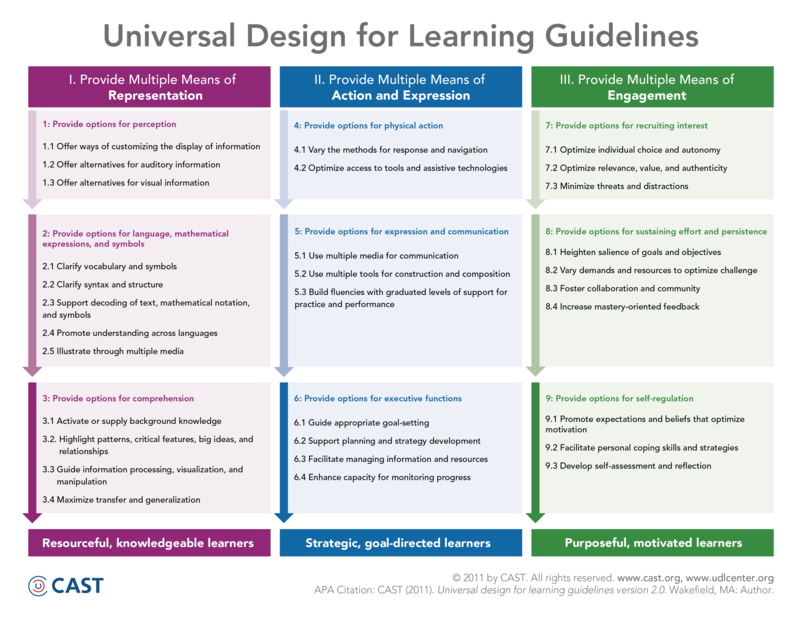Universal Design For Learning
Introduction to Universal Design for Learning
According to CAST, an educational research and development organization focused on expanding learning opportunities for all, “Universal Design for Learning is a set of principles for curriculum development that give all individuals equal opportunities to learn.”
The brief video clip below, “Introduction to UDL,” (UDLCAST, 2011) shows Dr. David Rose, one of the CAST developers, describing why UDL was developed and what it means for student learning.
You might also find these three brief videos helpful as you think about the principles of UDL in the College Setting.
UDL On Campus: Getting Started
CAST provides some excellent resources at CAST The getting started page has a lot of useful information on why it’s a great idea to use the UDL framework on your campus.
CAST (2011a) provides a description, in multiple formats, to explain the UDL principles and guidelines. The site includes links to a graphic organizer, full-text description of the principle, and examples of implementation. Figure 5 below, the CAST graphic organizer, provides an overall glimpse of the guidelines. (Click on the image to enlarge.)

Multiple Means of Action & Expression
Provide Multiple Means of Action and Expression (MMAE) is the principle of Universal UDL that has been referred to as the “how” of learning (Rose & Meyer, 2002).
Multiple Means of Representation
Provide Multiple Means of Representation (MMR) has been referred to as the “what” of learning (Rose & Meyer, 2002).
Multiple Means of Engagement
The UDL framework principle, Provide Multiple Means of Engagement (MME), has been referred to as the “why” of learning (Rose & Meyer, 2002), or the motivation for learning.
UDL Resources at ECU